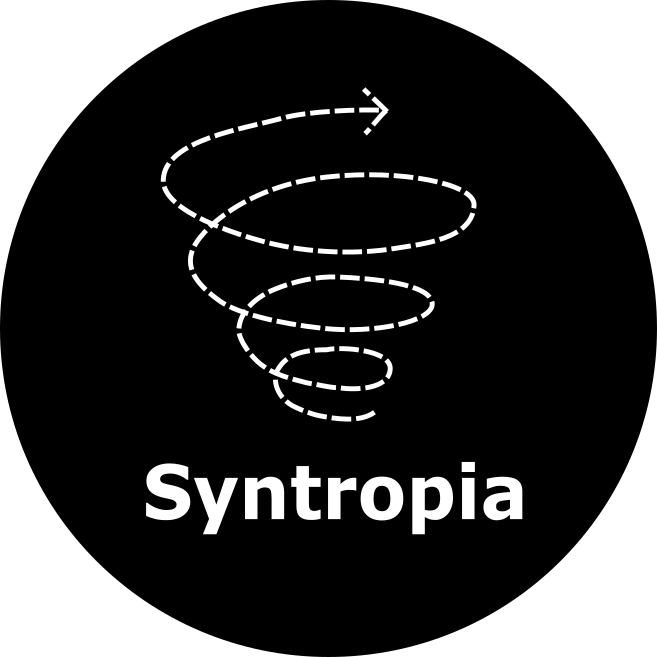The Synergy Between Holistically Managed Grazing and Syntropic Agriculture
Holistically managed grazing is a time and space dynamic, which ecology essentially is, but it is a savannah ecology essentially, it is grassland management. Syntropic Agriculture is essentially exactly the same thing but in a woodland ecology, when they combine, they create a strong woodland edge dynamic, they rely on similar disturbance and recovery cycles - the management can be streamlined together and the whole will be again, much more than the sum of the parts.
Imagine savanna type crops, managed with animals, set in alleys of magnificent, healthy and highly productive tree consortia of a Syntropic Agroforestry! The whole lot will be managed as one giant macro organism, as they both rely on the same disturbance and recovery cycles!
Managed grazing, or time managed grazing, a well understood practice for those working within the framework of “Holistic Management’ and ‘Grazing for Profit’, is a remarkably effective form of regenerative agriculture, probably at this stage one of the best. It is a practice of managing a space and time dynamic within an ecology in order to achieve desired outcomes - increases in soil carbon, a healthy water cycle, increase in total biomass in all forms - including the form of biomass which is the chosen yield of the farmer, which equals increased profit, often in the form of reduced costs, as the increasing function of the ecology drives the increase in abundance, less money is spent on external input to fill the shortfall. In summary, the health of everything increases due to the conscious management of the ecology, with clear understanding and goals in mind of the farmer, this is quite often why “managing the whole” is one of the only real ways to achieve this outcome.
Let’s have a closer look at how this works, where the human interaction happens - where the rubber hits the road. Time managed grazing, holistic grazing, planned grazing… it has many names, but for the sake of this article let's call it time managed grazing, because time is the operative word here, it is the element that creates the dynamic. This is an insight where the manager of the piece of land understands that grasses, herbivores and predators form what is known as a keystone in an ecology - keystone because without these elements combining in the correct balance, the ecology collapses, this is where we end up with overgrazing, unhealthy animals, pesticide and herbicide use, pollution, the list goes on…. With the balance put into place with the grasses, herbivore and predator, the ecology grows in health, upwards in an ever increasing spiral of life, this function is also known as syntropy - as opposed to entropy. In the managed context, the predator is the human with the fence, most often an electric fence. This is because in a healthy wild ecology, the predator is the element within the dynamic that causes the pattern movement of large herds of herbivores. When either the real predator, or the human with the fence move the animals, the grasses are then able to recover, after being grazed, manured upon, urinated upon, and also having a synergetic dose of microbes from the saliva of the herbivores. The event of grazing (disturbance) is vitally important to these grasses, the grasses have co evolved with the herbivores, and without each other, relating in the correct way, the ecology takes a nosedive. Grasses recover powerfully and they again need the herbivores, because the leaf matter that they have produced becomes old and unproductive if not disturbed - it needs to be grazed. The herbivores smell this grass for many miles and head towards it, all the while being moved off other areas and kept in a tight bunch by predators. This pattern allows grasses to be grazed, turned into nutrients, given to the soil, a recovery as the animals move away, and a new graze when it is time. This is a cycle of carbon going into the earth through photosynthesis, turbo charged by the positive feedback loop of life. This is the function that regenerative farmers use on their land.
Syntropic Agriculture is the woodland equivalent. Trees are grown in consortia, within this, successional groups take the lead and nurse and uplift the species which will follow them, while they are young. After a certain pulse of growth is finished, the trees in the leading successional group will require disturbance, just like the grasses need the herbivores to come back. After that event, which creates renewal, nutrients come back to the earth and a new, higher level of life, higher level of succession group of plants within the consortium break through with vigor and lead the recovery, full of power. The disturbance and recovery cycle is essential for healthy woodlands, and so is the diversity, which is essential in the creation of the consortium (the consortium is a bit of syntropic jargon used to describe how plants group together in a very specific and precise way). When this woodland time and space dynamic comes together, the whole is much more than the sum of the parts. In nature, these disturbance cycles are normally a combination of storms, pathogenic microbes, diseases, insect attacks, but mostly a combination of these. In Syntropic agriculture, the manager is the storm and the combined forces which amount to the disturbance event, but also timed very precisely.
One can combine both of these ecologies on one farm and get the best of both worlds, we all know that trees are essential to get the full picture when it comes to the environment, and now we have found the perfect solution to match savanna ecological management - Holistically Managed Grazing, with woodland ecological management - in the form of Syntropic Agriculture. They are both ecosystem driven forms of production.
I have just returned from doing a consultation in the dry tropical savanna of North Queensland, Australia where this combination is beginning to take place, I will be posting more about this as the project develops, so make sure you follow my facebook page “Syntropia”
If you would like to learn to master Syntropic Agriculture, I have created a comprehensive learning platform, with a built in online course covering the essential principles, advanced and applied Syntropic Agriculture, Q&A, shared consultation reports, all within a group learning community. I have also made this very affordable for those who are serious about becoming early adopters and tomorrow's leaders in this remarkable new form of regenerative agriculture. If you are interested, please click here to learn more.


